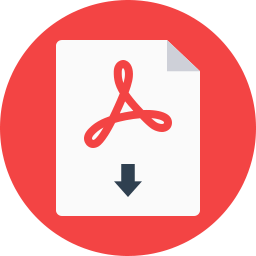
ICAI CA ExamInstitute of Chartered Accountants of India
- Test Level-: National Level
- Eligibility-: 12th
- Duration-:2 Hours
- Stream-: Commerce
- Medium-: English
- Examination Mode-: Online
- Total Questions-: 400
ICAI CA May 2024 exam dates have been announced. Registration process of CA exams May 2024 will begin from February 2, 2024. The CA Intermediate and CA Final exams will be held in May whereas CA Foundation exam will be held in June 2024.
ICAI Exam Highlights
ICAI CA is a professional course which allows candidates to take up Chartered Accountancy as a profession. Given below is the table indicating key highlights of the ICAI CA exams and courses:
|
ICAI CA Exam Features |
Details |
|
Exam Name |
ICAI CA Exam |
|
Conducting Body |
Institute of Chartered Accountants of India |
|
Exam Level |
National |
|
Exam Frequency |
Twice a year |
|
Exam Mode |
Online |
|
Exam Duration |
Two hours |
|
Language |
English |
|
Exam Purpose |
Training and certifying Chartered Accountants in India |
|
Course Offered |
Chartered Accountancy |
|
No. of Test Cities |
194 cities in India and 8 cities abroad |
|
Exam Helpdesk No. |
1800 419 2929 |
|
Exam Website |
icaiexam.icai.org |
ICAI CA Eligibility Criteria 2024
Candidates seeking admission to the CA programme need to fulfil the course-wise eligibility criteria as mentioned below:
CA Foundation Eligibility Criteria
- Candidates who have passed Class 12 or equivalent examination from the Central or State Board of Education before the examination are eligible.
- Candidates who have:
-
- Registered with Board of Studies on or before 30 June of the examination year
- Changed to CA Foundation Course with Board of Studies of ICAI on or before September 7 of the examination year.
CA Intermediate Eligibility Criteria
- Candidates who have passed CA Foundation examination or equivalent examination are eligible
- Candidates who have registered for previous CA Intermediate exam as per syllabus under paragraph 2 or 2A of Schedule B or Professional Education (Course-II), Professional Competence Course and converted into Intermediate (IPC) Course/ Accounting Technician Course (ATC) are eligible
- Candidates who have completed graduation or post-graduation in any stream from a recognized institute of India are also eligible
CA Final Eligibility Criteria
- The candidate who have passed the CA Intermediate examination or Professional Education Examination – II/PCC/IPCC, are eligible to apply for the CA Final exam
- They must also have completed 3 years or 3½ years or must be due to complete, as the case may be, of article training as on the date of filling the form
- For PE-II stream student and PE-II stream students converted to IPCC – Also, they must be serving the last twelve months of articled training including excess leave, if any, and due to complete 3 years on or before October 31 of the examination year.
- For PCC stream students - The candidate must be serving the last six months of articled training including excess leave if any, and due to complete 3½ years on or before 30th April of the examination year
- For Intermediate IPCC students – The candidate must be serving the last six months of training including excess leave if any, and due to complete 3 years on or before April 30 of the examination year.
- For students converted from PE-II to PCC as well as for students converted from PE-II to PCC and then to IPCC - The candidate must be serving the last twelve months of training including excess leave if any, and due to complete 3½ years articles on or before October 31 of the examination year.
- Candidates who have taken termination are advised to re-register for the balance period of training
Pattern
|
Examination |
Paper(s) Exam. |
Timings (IST) |
Duration |
|
Foundation
|
Paper 1 & 2 Paper 3 &4 |
2 PM to 5 PM 2 PM to 4 PM |
3 Hours 2 Hours |
|
Intermediate |
All Papers |
2 PM to 5 PM |
3 Hours |
|
Final |
Paper 1 to 5 |
2 PM to 5 PM 2 PM to 6 PM |
3 Hours 4 Hours |
|
Post Qualification Course Examination |
ALL |
2 PM to 6 PM |
4 Hours |
Important Dates
|
Dates |
Upcoming Exam Dates |
|
02 Feb '24 - 23 Feb '24 |
CA Exam May 2024 Registrations |
|
23 Feb '24 - 02 Mar '24 |
CA Exam May 2024 Registrations with late fees |
|
03 Mar '24 - 09 Mar '24 |
CA Exam May 2024 form correction |
|
02 ,4th & 6th May '24 |
Group I (Final Exam) |
|
8th,10th & 12th May’24 |
Group ii (Final Exam) |
|
3th, 5th & 7th May’24 |
Intermediate Course Examination (Group i) |
|
9th,11th &13th May’24 |
Intermediate Course Examination (Group ii) |
|
10th & 12th May’24 |
Member’s Examination (Internal Taxation – Assessment Test) |
|
20th,22nd, 24th and 26th June |
CA Foundation Exam |
ICAI Exam 2024 Application Form
ICAI Exam Application Forms for Foundation, Intermediate, or Final Courses can be found online at the official website of the conducting body.
Given below are the step-by-step instructions to register for ICAI Exam 2023 Application Form:
Step 1: ICAI Exam 2023 Registration
- Visit the official website of ICAI - icaiexam.icai.org/
- New applicants must click on Login/Register and proceed to “New Registration”
- When ICAI Registration Form pops up, candidates must fill in the required information in the allotted slots.
- In this form, applicants must choose their course/level and fill in information like selecting prefix, registration number (must be selected), candidates’ date of birth, valid email, mobile number, and landline number
- Click on confirm and register for ICAI exam
Step 2: Fill in ICAI Exam Application Form
- After completing the registration, applicants must move on to filling the application form.
- Applicants must authenticate using course, date of birth, and SRN.
- After authentication, enter your email and mobile number and log in using the registration number and password.
- After logging in, applicants must fill in their address and other personal information as well as the academic information required in the application form.
- Applicants must also upload the required documents, i.e. Photograph & Signature in the size of 3.5 cm X 4.5 cm
Step 3: ICAI Exam Application Fees Payment
- After completing the application form, applicants are required to pay the due ICAI Application Fees.
- ICAI Application Forms are free of charge, however, applicants must pay the exam fees at the time of registration.
- Applicants can pay the fees online mode at the payment gateway provided on the official website.
Given below are the methods to pay the application fees
- Debit Card or Credit Card (Visa or Master or Maestro/ Rupay)
- Net Banking
- Bhim UPI payment
ICAI Exam 2023 Application Fees
- For admissions into the CPT, applicants must pay INR 400/-
Given below are the application fees for ICAI Exam:
|
Course |
Single Group |
Both Groups |
|
Foundation Course |
INR 1,500 |
- |
|
Intermediate/ Intermediate (IPC) Course |
INR 1,500 |
INR 2,700 |
|
Final Course (Old & New) |
INR 1,800 |
INR 3,300 |
ICAI Exam 2023 Application Form Instructions
- Once a login ID is created, applicants will receive a username and password through email, and SMS, using which, applicants can log in using their credentials.
- If the photograph or signature is not clear, applicants must attach the photograph or sign at the required place.
- Candidates may be required to get their ICAI CA Application Form attested by a Chartered Accountant or a Gazetted Officer or Principal of School/College.
Foundation Syllabus
PAPER 1: ACCOUNTING (100 MARKS)
Objective
To develop an understanding of the basic concepts and principles of accounting and apply the same inpreparing financial statements and simple problem solving.
Contents
- Theoretical Framework
- Meaning and Scope of Accounting.
- Accounting concepts, principles and conventions.
- Capital and revenue expenditure, capital and revenue receipts, contingent assets and contingentliabilities.
- Accounting policies.
- Accounting as a measurement discipline – valuation principles, accounting estimates.Accounting Standards - concepts and objectives.
2.Accounting Process
- Recording accounting transactions: principles of double entry book- keeping, books of originalentry - journal, subsidiary books, cash book, ledger-format, posting from journal and subsidiary books, balancing of accounts.
- Preparation of trial balance.
- Rectification of errors.
3.Bank Reconciliation Statement
Introduction, reasons and preparation of bank reconciliation statement.
4.Inventories
Meaning, basis and technique of inventory valuation, cost of inventory, net realizable value and recordsystem.
5.Depreciation and Amortisation
Tangible and intangible assets-Meaning and difference, concepts, methods of computation and accounting treatment of depreciation / amortisation, change in depreciation method.
6.Bills of exchange and Promissory notes
Meaning of bills of exchange and promissory notes and their accounting treatment; accommodationbills.
7.Preparation of Final accounts of Sole Proprietors
Elements of financial statements, closing adjustment entries, trading account, profit and loss account and balance sheet of manufacturing and non- manufacturing entities.
8.Financial Statements of Not-for-Profit Organizations
Significance and preparation of receipt and payment account, income and expenditure account and balance sheet, difference between profit and loss account and income and expenditure account.
9.Accounts from Incomplete Records (excluding preparation of accounts based on ratios).
- Partnership and LLP Accounts
- Final accounts of partnership firms and LLPs.
- Admission, retirement and death of a partner including treatment of goodwill.
- Dissolution of partnership firms and LLPs including piecemeal distribution of assets.
11.Company Accounts
- Definition of shares and debentures.
- Issue of shares and debentures, forfeiture of shares, re-issue of forfeited shares.
- Redemption of preference shares and debentures (excluding purchase and redemption of owndebentures and sinking fund method).
- Accounting for bonus issue and right issue.
PAPER 2: BUSINESS LAWS (100 MARKS)
Objective
To develop general legal knowledge of the law of Contracts, Sales and understanding of various forms of businesses and their functioning to regulate business environment and to acquire the ability to address basic application-oriented issues.
Contents
- Indian Regulatory Framework
Major Regulatory Bodies such as Ministry of Finance, Ministry of Corporate Affairs, SEBI, RBI, IBBI, Ministryof Law and Justice, etc.
2.The Indian Contract Act, 1872
General nature of contract, Consideration, Other essential elements of a valid contract, Performance of contract, Breach of contract, Contingent and Quasi Contract, Contract of Indemnity and Guarantee, Contract of Bailment and Pledge, Contract of Agency.
3.The Sale of Goods Act, 1930
Formation of the contract of sale, Conditions and Warranties, Transfer of ownership and Delivery of goods, Unpaid seller and his rights.
4.The Indian Partnership Act, 1932
General Nature of Partnership, Rights and Duties of partners, Reconstitution of firms, Registration and Dissolution of a firm.
5.The Limited Liability Partnership Act, 2008
Introduction-covering nature and scope, Essential features, Characteristics of LLP, Incorporation andDifferences with other forms of organizations.
6.The Companies Act, 2013
Essential features of company, Corporate veil theory, Classes of companies, Types of share capital, Incorporation of company, Memorandum of Association, Articles of Association, Doctrine of Indoor Management.
7.The Negotiable Instruments Act, 1881
Meaning of Negotiable Instruments, Characteristics, Classification of Instruments, Different provisions relating to Negotiation, Presentment of Instruments, Rules of Compensation.
Note: If new legislations are enacted in place of the existing legislations, the syllabus would include thecorresponding provisions of such new legislations with effect from dates notified by the Institute.
The specific inclusions/ exclusions in the various topics covered in the syllabus will be effected every year byway of Study Guidelines, if required.
PAPER 3: QUANTITATIVE APTITUDE (100 MARKS)
Objective
- To develop an understanding of the basic mathematical and statistical tools and apply the same inbusiness, finance and economic situations.
- To develop logical reasoning skills.
Contents
The whole syllabus of Quantitative Aptitude shall be divided into three broad areas:
·Business Mathematics
- Logical Reasoning
- Statistics
PART A: BUSINESS MATHEMATICS (40 MARKS)
- Ratio and proportion, Indices and Logarithms: Ratio and proportion and Time and work-relatedproblems, Laws of Indices, Exponents and Logarithms and Anti Logarithms.
- Equations: Equations: Linear Simultaneous linear equations up to three variables, Quadratic and Cubicequations in one variable. Applications in Business related problems.
- Linear Inequalities: Linear Inequalities: Linear Inequalities in one and two variables and the solutionspace.
4.Mathematics of Finance:
- Simple Interest
- Compound interest
- Nominal and Effective Rate of Interest
- Present Value
- Net Present Value
- Future Value
- Perpetuity
- Annuities
- Sinking Funds
- Calculating of EMI
- Calculations of Returns: Nominal and Effective rate of Return
- Compound Annual growth rate (CAGR)
- Permutations and Combinations: Basic concepts of Permutations and combinations: Introduction, the factorial, permutations, results, circular permutations, permutations with restrictions, Combinations with standard results.
- Sequence and Series: Introduction Sequences, Series, Arithmetic and Geometric progression, Relationship between AM and GM and Sum of n terms of special series and Business Applications.
7.Sets, Relations, and Functions. Basics of Limits and Continuity functions.
- Basic applications of Differential and Integral calculus in Business and Economics (Excluding thetrigonometric applications).
PART B: LOGICAL REASONING (20 MARKS)
9.Number series coding and Decoding and odd man out
- Direction Tests
11.Seating Arrangements
- Blood Relations
PART C: STATISTICS (40 MARKS)
- Unit 1: Statistical Representation of Data: Diagrammatic representation of data, Frequency distribution, Graphical representation of Frequency Distribution – Histogram, Frequency Polygon, Ogive,Pie-chart.
Unit:2 Sampling: Basic principles of sampling theory, comparison between sample survey and complete enumeration, some important terms associated sampling types of sampling, sampling andnon-sampling errors.
- Measures of Central tendency and Dispersion: Measures of Central Tendency and Dispersion: Mean Median, Mode, Mean Deviation, Quartiles and Quartile Deviation, Standard Deviation, Co-efficient of Variation, Coefficient of Quartile Deviation.
- Probability: Independent and dependent events; mutually exclusive events. Total and CompoundProbability and Bayes’ theorem.
- Theoretical Distributions: Random variables, Discrete and Continuous Random variables, Expectation of a discrete random variable, Theoretical Distributions: Binomial Distribution, Poisson distribution – basic application and Normal Distribution – basic applications.
- Correlation and Regression: Scatter diagram, Karl Pearson’s Coefficient of Correlation Rank Correlation, Regression lines, Regression equations, Regression coefficients.
- Index Numbers: Uses of Index Numbers, Problems involved in construction of Index Numbers, Methodsof construction of Index Numbers. BSE SENSEX and NSE.
PAPER 4: BUSINESS ECONOMICS (100 MARKS)
Objective
To develop an understanding of the concepts and theories of Economics and to acquire the ability foraddressing application-oriented issues.
Contents
- Introduction to Business Economics
Meaning and scope of Business Economics.
Basic Problems of an Economy and Role of Price Mechanism.
2.Theory of Demand and Supply
Meaning and Determinants of Demand, Law of Demand and Elasticity of Demand – Price, Income andCross Elasticity.
Theory of Consumer’s Behaviour –Indifference Curve approach.
Meaning and Determinants of Supply, Law of Supply and Elasticity of Supply, Market Equilibrium andSocial Efficiency.
3.Theory of Production and Cost
Meaning and Factors of Production, Short Run and Long Run.
Law of Production – The Law of Variable Proportions and Laws of Returns to Scale,
Producer’s Equilibrium.
Concepts of Costs – Short-run and long-run costs, Average and Marginal Costs, Total, Fixed andVariable Costs.
4.Price Determination in Different Markets
Market Structures: Perfect Competition, Monopoly and Monopolistic Competition. Using Game Theory tostudy Oligopoly.
Price Determination in these Markets.
Price- Output Determination under different Market Forms.
5.Determination of National Income
- Macro Economic Aggregates and Measurement of National Income.
- Determination of National Income: Keynes’ Two Sector Basic Model, Three Sectors and Four SectorsModels.
6.Business Cycles
- Meaning
- Phases
- Features
- Causes behind these Cycles
7.Public Finance
- Fiscal functions: An Overview, Centre and State Finance.
- Market Failure/ Government intervention to correct market failure.
- Process of budget making: Sources of Revenue, Expenditure Management, and Management ofPublic Debt.
- Fiscal Policy.
8.Money Market
- Concept of Money Demand.
- Important theories of Demand for Money.
- Concept of Money Supply, Cryptocurrency and other new terminology.
- Monetary Policy.
9.International Trade
- Theories of International Trade including theories of intra-industry trade by Krugman.
- Trade Policy – The Instruments of Trade Policy.
- Trade Negotiations.
- Exchange Rates and its economic effects.
- International Capital Movements: Foreign Direct Investment.
- Indian Economy (Before 1950- Chanakya and Nand Vansh, OECD Paper (1950- 1991), Basic knowledge1991 Onwards.
Best Books for CA Courses
- CA Foundation Books for Paper 1- Principles and practice of Accounting by PC Tulsian and Bharat Tulsian.
- CA Foundation Books for Paper 2- Business laws and business correspondence and reporting by PC Tulsian, Tushar Tulsian and Bharat Tulsian
- CA Foundation Books for Paper 3- Business mathematics, statistics and logical reasoning by Kailash Thakur
- CA Foundation Books for Paper 4- Business Economics and Business and commercial knowledge by Bharat Tulsian. P.C Tulsian
- CA Foundation scanner cum compiler by Dr S.K Agarwal, CA Manmeet Kaur
- Fundamentals of Accounting by Grewal's Accountancy
- Fundamentals of Accounting PC Tulsian and Bharat Tulsian
- Mercantile Law by MC Kucchal, Vivek Kucchal
- Mercantile law study Material by ICAI
- General Economics by PM Salwan, Pranjal B Deshpande
- General Economics by SK Agrawal
- General Economics by ICAI
- Quantitative Aptitude by Dr T Padma and KCP Rao
ICAI 2024 Preparation Tips
- Study ICAI CA Syllabus: Begin your preparation by thoroughly understanding the CA syllabus. This will help you to focus on the relevant topics and allocate your study time efficiently.
- Refer to ICAI CA Study Material: The ICAI Study Material is a comprehensive resource designed specifically for CA Foundation, CA Intermediate, and CA Final exams. It is recommended to refer to it while studying the various subjects.
- ICAI CA Practice Previous Year Question Papers: Practicing CA previous year question papers and answering them in a format similar to the suggested answers will help you develop the skills to present your answers as per ICAI’s expectations. This practice enhances your chances of scoring higher marks.
- Take CA Mock Test Papers: Attempting mock test papers regularly will give you a real-time exam experience and help you identify your strengths and weaknesses. It also helps in improving time management skills and boosting confidence.
- At last, review Test Papers: ICAI Revision Test Papers are designed to assess your understanding of the concepts and topics. Reviewing these papers will allow you to gauge your progress and focus on areas that need more attention.
CA Foundation Cut Off 2023
The ICAI announced the CA Foundation Cut Off 2023 after the result was declared. The passing percentage for the same was 24.98%. Only 25,000+ students of the 1,00,000+ students passed the exam.
As per ICAI, students must acquire 40 marks for each paper. An overall 50% is required in the CA Foundation exam to qualify for the next level. Students can review the expected CA Foundation cut off to secure their qualification.
How to Check CA Foundation Cut Off 2023?
Students can check the official cut off scores after the result is declared on the ICAI website. Below, candidates can find the steps to check the CA Foundation 2023 cut off.
- Step 1: Students must go to the ICAI official website: icai.org.
- Step 2: Candidates must find and click on the CA Foundation 2023 cut off link.
- Step 3: Applicants must enter the login details for the portal.
- Step 4: A new window with the cut off marks will appear.
- Step 5: Students can check and download the cut off marks for reference.
|
How can students check the CA Foundation result Students can visit the official ICAI website, icai.org, to view the CA Foundation results. Applicants are required to log in with their credentials and view the link for the result. |
CA Foundation 2023 Cut Off Marks
CA Foundation cut off marks are the minimum marks a student must score to qualify for the CA Intermediate exam. Students can check the cut off marks once the results are available. The expected cut off marks for the November/December 2023 session are mentioned below:
|
CA Foundation 2023 Cut Off Marks |
||
|
CA Foundation Expected Cut Off: November/December Session |
||
|
Section/Papers |
Subject-wise Cut Off Marks |
Overall Cutoff Percentage |
|
Accounting |
40 marks out of 100 marks |
50% (200 marks out of 400) |
|
Business Laws |
40 marks out of 100 marks |
|
|
Quantitative Aptitude Part A: Business Mathematics Part B: Logical Reasoning Part C: Statistics |
40 marks out of 100 marks |
|
|
Business Economics |
40 marks out of 100 marks |
|
CA Foundation Passing Percentage
The CA Foundation previous year cut off signifies the percentage of candidates who passed the exam. It also emphasises the difficulty of the exam. Students can review the table below to understand the performance of candidates based on categories.
CA Foundation, Dec 2022 Pass Percentage
Tabulated below is the pass percentage for Dec, 2022 session of CA Foundation exam:
|
CA Foundation Pass Percentage, Dec 22 |
|||
|
Particulars |
Males |
Females |
Total |
|
Number of candidates appeared |
68294 |
57721 |
126015 |
|
Number of candidates passed |
20195 |
16669 |
36864 |
|
Pass percentage |
29.57 |
28.88 |
29.25 |
CA Foundation, Jun 2022 Passing Percentage
Below, students can find the pass percentage for Jun session, 2022:
|
Particulars |
Male |
Female |
Total |
|
Number of candidates appeared |
51111 |
42618 |
93729 |
|
Number of candidates passed |
13043 |
10650 |
23693 |
|
Pass percentage |
25.52 |
24.99 |
25.28 |
CA Foundation, Dec 2021 Passing Percentage
Students may refer to the Dec 2021 session’s pass percentage of CA Foundation exam:
|
CA Foundation Passing Percentage, Dec 2021 |
|||
|
Particulars |
Male |
Female |
Total |
|
Number of candidates appeared |
60097 |
50565 |
110662 |
|
Number of candidates passed |
18151 |
15359 |
33510 |
|
Pass percentage |
30.20% |
30.37% |
30.28% |
Factors Determining the CA Foundation Cutoff
The factors affecting the cutoff of CA Foundation exam may change each year. Students must assess the list of factors affecting the cut off for CA Foundation exam:
- Number of candidates: The more students apply for the exam, the higher the cut-off.
- Number of students who pass the exam.
- The difficulty level of the exam
- CA Foundation previous year cut off trends.
- Reserved category candidates
- CA Foundation Exam Pattern and marking scheme: Students will have lower scores if any negative marking scheme is exercised.
ICAI Exam 2024 Admit Card
- ICAI Exam 2024 Admit Card is released for candidates who have successfully registered for the exam.
- Candidates are required to bring their admit cards to gain admission into the exam hall.
ICAI Exam 2024 Admit Card: How to Download?
Given below are the step-by-step instructions to download ICAI Exam Admit Card:
- Step 1: Candidates must log into the candidates portal at the official website of the conducting body - icaiexam.icai.org/ using their registration number and password
- Step 2: After logging in, applicants must click on the admit card tab, which will redirect them to a pdf file of the admit card.
- Step 3: After downloading the pdf format of ICAI Exam Admit Card, applicants can take a printout of the card.
ICAI Exam 2024 Admit Card: Recover Password
Given below are the steps to recover ICAI Exam 2023 Admit Card login password:
- Step 1: Applicants must go to the login tab, and click on the forgot password tab.
- Step 2: Applicants will be redirected to another tab with other options to recover the password.
- Step 3: Applicants can use any 3 options to recover their password.
Given below are the options to recover the password:
- Option A: Recovering Password via email: Candidates must enter their registration number, mobile number/ email ID, and security question
- Option B: Recovering Password using registration number, date of birth, and security question
- Option C: Recovering Password using registration number, bar code & pin.
ICAI Exam 2024 Admit Card: Details Mentioned
Given below are the details mentioned in ICAI Exam Admit Card:
- Candidates Name
- Candidates Registration Number
- Program details
- Candidate’s photo and signature
- Exam venue and timing
ICAI Exam 2024 Admit Card Helpdesk
- Candidates without admit cards will not be allowed to enter without the exam hall.
- In case of any discrepancy, candidates must report it to the conducting body immediately.
Given below are the contact details of the conducting body:
|
Course Name |
Email ID |
Phone Number |
|
CA Foundation |
foundation_examhelpline@icai.in |
0120 3894811, 812 |
|
CA Intermediate |
intermediate_examhelpline@icai.in |
0120 3054806, 819 |
|
CA Final |
final_examhelpline@icai.in |
0120 3894807, 808, 827 |

 PDF 1
PDF 1
.png)
; ?>images/int (3).png)
 International Experts
International Experts




